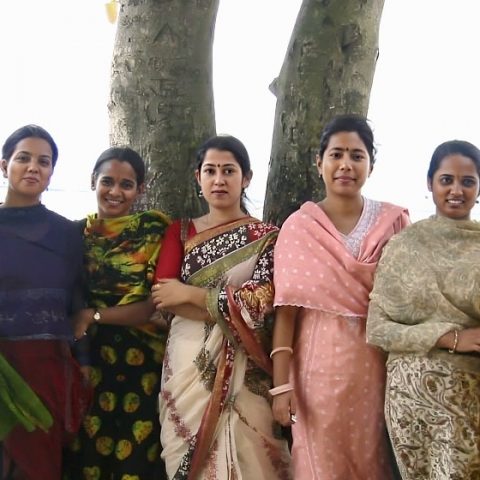Vaccines and antibiotics occupy a privileged position in the history of medicine. They are humanity’s “magic bullets” — categories of intervention so effective and easy to deliver that they have the capacity to single-handedly eradicate entire diseases from human history. But just as the heady utopia of an antibiotic age has given way to the cold, evolutionary reality of antibiotic resistance, we must now also confront the pervasive problem of vaccine failure in the global South.
Vaccines fail for many reasons. Years of effort have failed to deliver a vaccine for HIV. In many cases the best solution may simply be to focus resources on alternative therapies, much as antiretroviral drugs have reduced the burden of HIV in the absence of an effective vaccine.
What is more immediately concerning is the existence of vaccines that are known to be completely effective in industrialized nations, but that show reduced efficacy when introduced to impoverished communities in the global South.
Oral polio vaccine: Booster doses for the ultrapoor
The 20th century witnessed concerted humanitarian efforts to introduce polio vaccines to the poorest corners of the world, with the hope of eradicating the disease entirely. It was during these efforts that someone first observed reduced vaccine efficacy in ultrapoor communities.
In 1967 Dr. T. Jacob John, a pediatrician at Christian Medical College in Vellore, India, began to notice that some children were developing polio infections even though they had received the recommended three doses of oral polio vaccine. Follow up work showed that many children in Vellore did not respond to immunization by producing antibodies, even though response rates to oral polio vaccine in American children were close to 90 percent.
Years later he returned to India with a simple idea of how to overcome the efficacy deficit in oral polio vaccine. John’s team gave additional booster doses to children, supplementing the existing recommendation. This lead to a dramatic reduction in polio paralysis in the area around his test site. He called this new system pulse immunization and in 1995 it was adopted as national policy by the Indian government.
Polio was eradicated from India in 2014. Without the development of pulse immunization it is unlikely that this would have been possible.
What causes the efficacy gap?
Outside of oral polio vaccine, deficits in efficacy have also been observed in oral vaccines for cholera and rotavirus. The reduced efficacy of the rotavirus vaccine is particularly troubling: It is the leading cause of childhood diarrhea in the world and was responsible for over 200,000 preventable deaths in 2013.
Rotavirus has been a central concern of my own research as a senior scientist and epidemiologist at icddr,b — a public health and biomedical research center in Dhaka, Bangladesh. In 2010 my team, in collaboration with partners in Vietnam, conducted clinical trials to determine the safety and efficacy of oral rotavirus vaccine in resource-poor Asian communities.
We found that the vaccine was safe and effective enough to justify the World Health Organization’s policy on expanded rotavirus immunization, but there was something very concerning about our results. Clinical trials of oral rotavirus vaccine in advanced economies had reported efficacy rates as high as 90 percent, but we observed efficacy rates below 50 percent.
Understanding the biological mechanisms behind this efficacy gap could inform the design of more effective immunization schemes. Researchers have noted that this phenomenon seems to be more prevalent in oral vaccines than injectable ones. Some have proposed that impaired gut function in poor children — caused by a combination of malnutrition and poor sanitation — can lead to chronic intestinal inflammation and reduced absorption of oral vaccines.
I have attempted to understand the causes of this phenomenon in my own work. My team identified children who showed poor responses to oral polio and rotavirus vaccines, and tested their stools for protein indicators of gut inflammation. We found elevated levels of inflammation, supporting the hypothesis that impaired gut function can play a causal role in vaccine failure.
Many hypotheses have been put forward and much remains to be understood. My hope is that our initial forays into this topic can inspire further work in the “global south.” A particularly interesting avenue for research would be metagenomic analysis of gut microbiota in children with blunted vaccine responses.
How can we close the gap?
Dr. Firdausi Qadri, one of my colleagues at icddr,b and an expert on reduced vaccine efficacy, has attempted to find ways to boost vaccine responses in resource-deprived settings. Qadri has done extensive work to introduce oral cholera vaccine to Bangladesh and in 2009 published a study that identified two simple and effective supplements that boost vaccine efficacy: zinc supplementation and breast-milk withholding.
Zinc deficiency is a major component of malnutrition and is known to impair immune function. Dr. Qadri’s findings suggest that combining efforts to combat zinc deficiency with immunization programs may be an efficient way to maximize the public health outcomes of vaccination.
Maternal antibodies in breast milk are essential for infant health, but may also suppress strong immune responses to vaccines. Qadri found that withholding breast milk for a few hours before vaccination can improve responses to oral cholera vaccine, without denying children the benefits of breast-feeding. Sadly, my team did not find this method to be effective for rotavirus vaccines.
Many other supplements to vaccination remain to be tested and such interventions could play a key role in closing the “north-south” gap in vaccine efficacy. I hope that my colleagues around the world can find some inspiration for future research in these findings.
There is a clear moral imperative to overcome this global divide in vaccine efficacy. Patient and creative research, conducted in extremely resource-poor settings, must play a vital role in these efforts. This tragic and cruel phenomenon ultimately fails the people most desperately in need of vaccines. A failure to address this issue is a failure to truly confront the suffering caused by poverty and disease.

